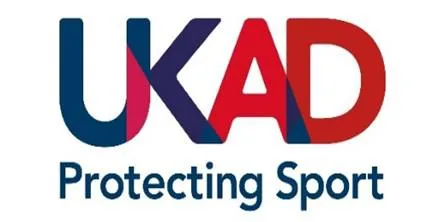Protein and peptide hormones in anti-doping
When growth hormone (GH) is administered, it affects a number of hormones in the body, in particular insulin-like growth factor I (or IGF-I) produced mainly in the liver and amino-terminal propeptide of type III collagen (P-III-NP) produced during bone and soft tissue production and breakdown. Using IGF-I and P-III-NP measurements combined according to a mathematical formula, of these biomarkers, enables one to identify the administration of GH as distinct from natural production. Since both GH and the biomarkers decline with age, an age adjustment to the formula is used. A separate formula is required for males and females since sex also affects these biomarkers.
The World Anti-Doping Agency have approved the biomarker test based on blood serum samples (serum being the clear liquid obtained when blood is coagulated). There is a need also to be able to measure these biomarkers in whole blood, including dried blood samples, as well as blood plasma (cell free blood).
Sophisticated but very reliable methods (using liquid chromatography coupled mass spectrometry) have been validated and checked by two international collaborative studies for the measurement of IGF-I. A similar approach for P-III-NP is being developed by us.The administration of growth hormone (GH) is prohibited in sport as are some of the substances that affect natural GH release or effects. Growth hormone releasing factors (GHRF) is one such group of substances. They range in size from relatively small chemicals, which are quite simple to detect in doping control analysis, to a group of peptides (or small proteins) whose detection is far more complex. This research investigates whether the metabolites of the larger GHRFs might be better substances to prove GHRF administration.
The administration of insulin and the wide range of insulin analogues are prohibited in sport unless one has a therapeutic use exemption such as is granted to individuals with insulin-dependent diabetes. Their concentrations in blood and urine is small, which poses a particular challenge. Furthermore, they are readily “lost” from the sample. We have shown that at least some of this loss is because of degradation of the insulin and/or the insulin “sticking” to the test tubes used during sample handling.
Investigators
| Professor David Cowan | Principal Investigator |
| Christiaan Bartlett | Lead Analyst Blood Doping |
| Elizabeth Yepez Gavilanes | Senior Analyst-Blood Doping |
| Nick Wojek | Head of Science & Medicine, UK Anti-Doping (UKAD) |
| Professor Andrew Hoofnagle | University of Washington |
| Dr Larry Bowers | Chief Science Officer at US Anti-Doping Agency (USADA) |
| Dr Holly D Cox | Senior Research Scientist, SMRTL |
| Dr Daniel Eichner | President/Director SMRTL, Salt Lake City |
| Brian D Ahrens | Director UCLA Olympic Analytical Laboratory |
| Professor Mario Thevis | Director, German Sport University Cologne |
| Dr Andreas Thomas | German Sport University Cologne |
| Dr Michelle Emrick | University of Washington |
| Peter Byers | Emeritus Professor, University of Washington |
| Professor Richard Holt | University of Southampton |
| Dr Stephen Morley | Clinical Senior Lecturer, University Hospital Leicester |
| Professor Paul Dargan | Consultant Clinical Toxicologist |
| Dr Matt Fedoruk | Chief Science Officer, US Anti-Doping Agency (USADA) |
| Professor Peter Sonksen | University of Southampton |
| Ivana Gavrilovic | |
| Adam Tilcock | |
| Scarlett Devey | |
| Maggie (Malgorzata) Puchnarewicz | |
| Dean Nyarko-Mensah |
PhD Students
| Siham Memdouh | PhD Student |
Aims
One:
- Quantification of Growth-Hormone-biomarkers (IGF-I and P-III-NP) in dried blood and blood plasma. Investigation to determine the relationship between the GH biomarkers in various blood matrices
- Determination of P-III-NP by LC-MS. To develop reference methods for quantifying P-III-NP in blood serum by LC-MS
Two:
- Identification of Growth-Hormone Releasing Factors (GHRF). Understand the metabolism of larger GHRFs (>3 kDa).
- Synthesis and characterisation of appropriate metabolites and develop sensitive analytical methods.
Three:
- Understanding the pre-analytical degradation of insulins. Insulins appear to be lost from samples by both degradation and adsorption. A better understanding of these losses is needed to improve insulin detection in sports samples. An understanding of the degradation is also needed to evaluate forensic cases where intoxication with an insulin is suspected.
Methods
Quantitative proteomics using LC-MS/MS
Trials Design
Double blind cross-over study design for GH administration (studies with University of Southampton)
Summary of Findings
Ongoing
Impact
These research projects support the objectives of anti-doping and will deliver methodologies suitable for the detection of a administered growth hormone, b GHRF in sport and c administered insulins in sport and other areas of forensic toxicology. Many of the methods will also be of value to the clinical community. The research underpinning this work was recorded as a Case Impact Study in the 2014 Research Excellence Framework: Catching the Drug Cheats: The Science Behind Anti-Doping for the London 2012 Olympic and Paralympic Games
https://ref2014impact.azurewebsites.net/casestudies2/refservice.svc/GetCaseStudyPDF/41268

Principal Investigators
Affiliations
Funding
Funding Body: Partnership for Clean Competition
Amount: £235,000
Period: September 2019 - September 2022





